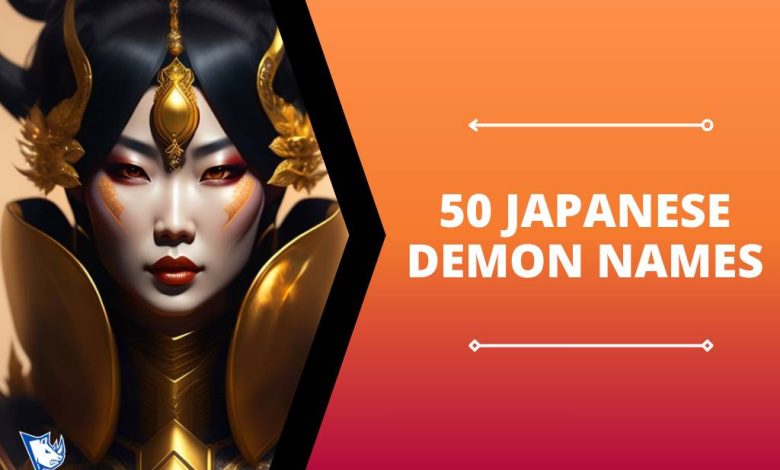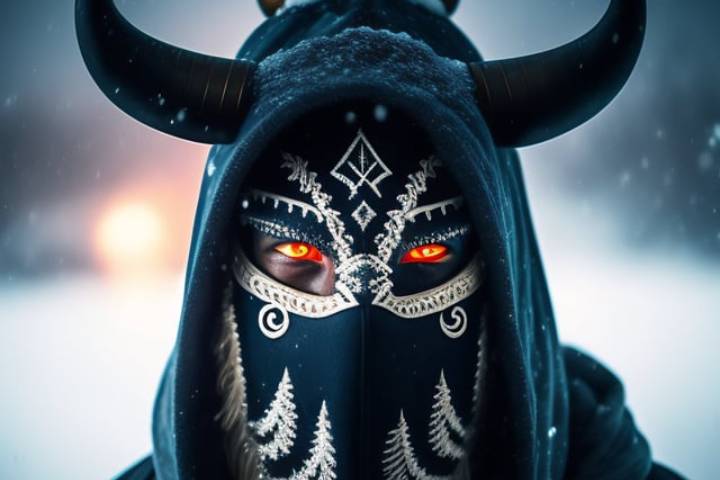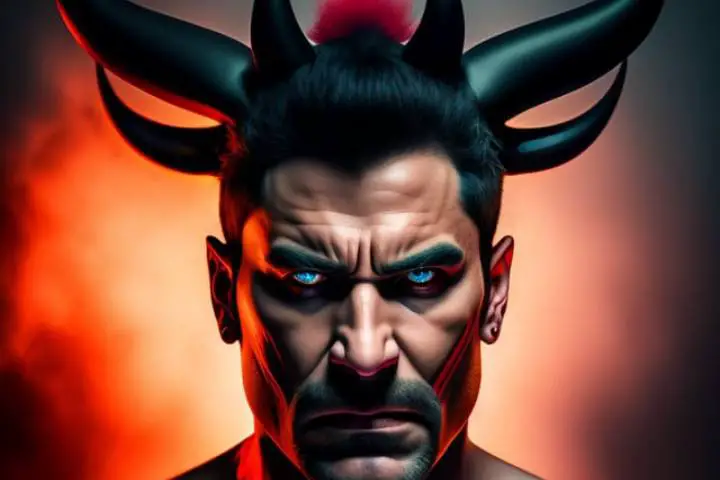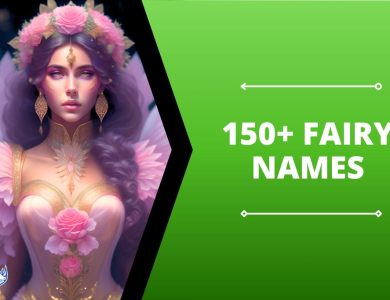50+ Japanese Demon Names With Complete Details

In the mystical realm of Japanese folklore, demons are revered and feared for their power and malevolence. These ancient beings have captivated imaginations for centuries, with their peculiar appearances, supernatural abilities, and intricate backstories. In this blog, we invite you to delve into the rich world of Japanese demon names, where we will explore their meanings, origin stories, and cultural significance.
Join us on this journey as we unravel the enigmatic tales behind these fearsome entities and gain a deeper understanding of the intricacies within Japanese mythology.
Japanese Demon Names
Discover the fascinating world of Japanese demon names, from terrifying oni to mysterious yokai. Uncover their dark legends and meanings today!
Oni (鬼) – The quintessential demons of Japanese folklore, often depicted as large and menacing creatures with horns, wielding clubs or other weapons. They are known to cause harm to humans, but stories also tell of oni being outwitted and defeated.
Kappa (河童) – Water demons known for their mischievous behavior, resembling a cross between a frog and a turtle, with a water-filled dish atop their heads. They are said to challenge humans to sumo wrestling matches to pull their souls from their bodies but can be polite if treated respectfully.
Tengu (天狗) – Mountain and forest dwelling spirits, often depicted with human and bird-like features. They are known to be skilled warriors, and while they can be protective of their domains, they also mentor worthy samurai.
Yuki-onna (雪女) – The “snow woman” is a spirit associated with winter and snowstorms. She is often described as beautiful but deadly, leading travelers astray in the snow to their demise.
Rokurokubi (ろくろ首) – Demons that look like humans during the day but at night, their necks stretch to great lengths to terrorize or spy on people. Some stories depict them as malevolent, while others show them as more mischievous.
Jorogumo (絡新婦) – A “binding bride” or spider demon that can change its appearance into a beautiful woman to lure men into her grasp before consuming them.
Nue (鵺) – A chimera-like creature with the face of a monkey, the legs of a tiger, the body of a tanuki (Japanese raccoon dog), and the front half of a snake for a tail. It is said to bring misfortune and illness.
Gashadokuro (がしゃどくろ) – Giant skeletons made from the amassed bones of people who died of starvation. They roam after midnight, capturing lone travelers to bite their heads off and drink their blood.

Kitsune (狐) – While not always considered demons, these mythical foxes possess intelligence and magical abilities, with the number of their tails indicating their age, wisdom, and power. They can be malevolent or benevolent.
Ame-onna (雨女) – Spirits associated with rain, depicted as women soaking wet, sometimes considered to bring the rain or be the embodiment of a woman who died in the rain.
Futakuchi-onna (二口女) – A woman with a second mouth on the back of her head, hidden under her hair. This mouth is often a curse for not eating or for being miserly with food.
Ubume (産女) – A spirit of a woman who died in childbirth and lingers in the mortal world, often seen as a crying woman holding a baby.
Kuchisake-onna (口裂け女) – The “slit-mouthed woman” is a malicious spirit of a woman mutilated by her husband, now haunting the streets and asking unsuspecting victims if they find her beautiful.
Kamaitachi (鎌鼬) – Sickle weasels, a trio of weasel-like creatures that ride whirlwinds, cutting unsuspecting victims with their razor-sharp claws.
Mokumokuren (目目連) – Spirits that appear in paper sliding doors (shōji), consisting of countless eyes peering through holes in the paper.
Noppera-bō (のっぺらぼう) – Faceless ghosts that scare humans by initially appearing normal, then wiping their faces away to reveal blank skin.
Isonade (磯撫で) – An enormous sea monster that lurks in the depths off the coasts of Japan, known for snatching fishermen and boats with its massive tail.
Nure-onna (濡女) – A dragon-like creature with the head of a woman and the body of a snake, often found on the shores of lakes and rivers, sometimes seen washing her hair.
Shirime (尻目) – A bizarre yōkai with an eye in the place of its anus. It startles people by revealing its singular eye.
Baku (獏) – Mythical beings that devour dreams and nightmares, often invoked by parents to protect children from bad dreams.
Kasa-obake (傘おばけ) – Sentient umbrella ghosts with one eye and a long tongue, born from household items that have reached their hundredth birthday.
Tsuchigumo (土蜘蛛) – A shape-shifting spider that can transform into a seductive woman or a fearsome warrior, often depicted in legends as an enemy of famous samurai.
Akaname (垢嘗) – A demon known for licking the filth from bathrooms. It’s said to represent the importance of cleanliness.
Yamauba (山姥) – Mountain witches known for their cunning and occasionally for nurturing young heroes or warriors, but also feared for eating travelers.
Hitotsume-kozō (一つ目小僧) – One-eyed small monks that surprise people but are relatively harmless, often considered to be mischievous rather than truly malevolent.
Kodama (木霊) – Spirits inhabiting trees, considered sacred in Shinto belief. They are protectors of the forest and indicators of its health.
Karakasa-kozo (唐傘小僧) – A type of Kasa-obake, these are playful spirits that appear as old umbrellas with one eye, one leg, and a long tongue.
Teke Teke (テケテケ) – The vengeful spirit of a woman or schoolgirl who was cut in half by a train and now crawls around using her elbows, slicing victims in half to mimic her own fate.
Umi-bozu (海坊主) – A sea spirit known for capsizing ships and drowning sailors, often appearing on calm nights as a giant humanoid figure.
Satori (覚) – A mind-reading creature found in the mountains of Japan, capable of understanding human thoughts and feelings.
Yamata-no-Orochi (八岐大蛇) – A legendary eight-headed and eight-tailed dragon, famously slain by the Shinto god Susanoo.
Ho-o (鳳凰) – Not a demon but a mythical bird similar to a phoenix, symbolizing the union of yin and yang, associated with peace, prosperity, and harmony.
Gyūki (牛鬼) – Ox-headed demons or yōkai, often depicted in stories as powerful and intimidating, sometimes with a human body.
Enenra (煙々羅) – A smoke-like yōkai that emerges from bonfires and is said to be visible only to the pure of heart.
Hone-onna (骨女) – A skeletal woman who appears as a normal woman from afar, but up close, she reveals her true, decaying form.
Otoroshi (おとろし) – A hairy creature that perches atop shrine gates, attacking and eating those who are unworthy of passing through.
Tsuchinoko (ツチノコ) – A legendary snake-like creature with a wide body and the ability to jump great distances.
Umibōzu (海坊主) – A sea spirit known for demanding a barrel from sailors to drown them, often appearing during storms.

Dorotabō (泥田坊) – A spirit of a farmer who has become a yōkai, haunting his neglected, overgrown fields and crying out for proper care.
Zashiki-warashi (座敷童子) – Child-like spirits inhabiting houses, believed to bring good fortune to those they favor, but their departure can bring misfortune.
Shikome (醜女) – Wild and ugly women of the underworld, sometimes dispatched by the gods to do their bidding, often involving tasks related to death or hindrance.
Namahage (生剥) – Demonic ogres known to visit villages on New Year’s Eve, scaring children into behaving and questioning laziness among adults.
Yasha (夜叉) – Fierce warrior demons or protectors in Buddhist mythology, often depicted as fearsome beings wielding weapons.
Ikuchi (イクチ) – A sea serpent that stretches as far as the eye can see, it’s said to wrap around ships, coating them in a sticky, oily substance.
Ittan-momen (一反木綿) – A living piece of cotton that flies through the air at night, often wrapping around the faces of humans to suffocate them.
Keukegen (毛羽毛現) – A small creature covered in long hair, symbolizing disease and filth, it inhabits households bringing illness.
Kudan (件) – A human-faced calf that is said to be born very rarely and speaks prophetic words before dying shortly after.
Nekomata (猫又) – A type of cat yōkai, often with two tails, which possesses paranormal abilities and a tendency to seek revenge.
Obake (お化け) – A general term for ghosts or supernatural beings in Japanese folklore, capable of transformation and often encountered in haunted places.
Shinigami (死神) – The “death gods” or spirits that invite humans toward death, often depicted as malevolent or neutral beings influencing mortality.
Also Read:
Final Thought
Japanese demon names carry a rich cultural and historical significance, serving as a window into the traditional folklore and mythology of Japan. These names often reflect the fears and beliefs of ancient societies, representing both the malevolent and benevolent forces in their stories. Through exploring these demon names, one gains insight into the complex spiritual beliefs and societal values of Japanese culture.




